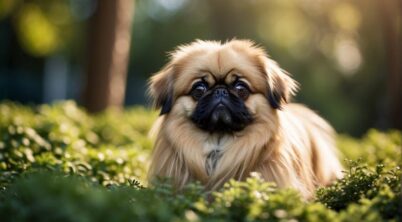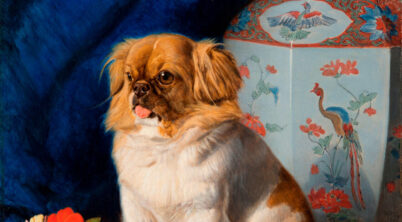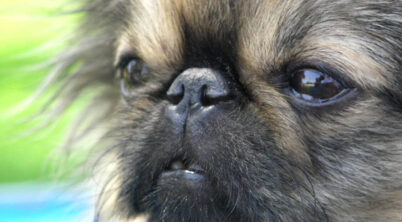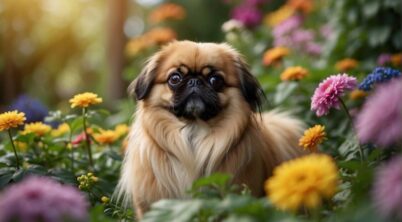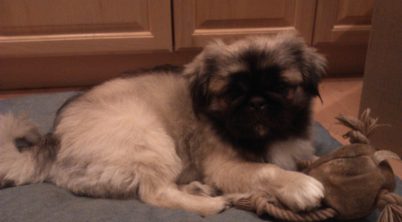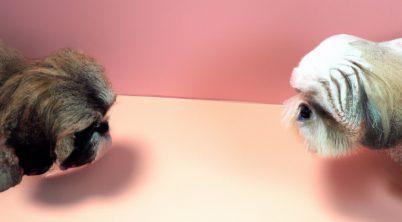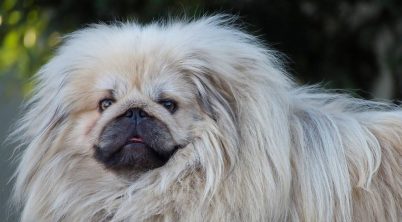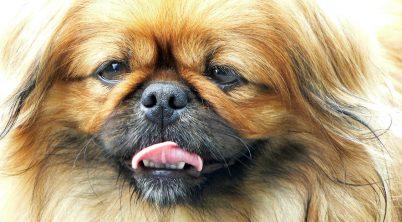The Pekingese, a toy dog breed with a notable history in China, has been a cherished companion for centuries, originating from the luxurious laps of Chinese royalty. Their compact size and distinctive features have made them a long-standing favorite among dog enthusiasts worldwide. Among the individual stories of Pekingese, those reaching remarkably old ages have garnered special attention.
Records of the oldest Pekingese often surface through dog shows and breed clubs, where the lifespans of these dogs are celebrated and documented. One notable Pekingese, known as Ch. Cherub of Theldon, achieved fame in the late 1930s with multiple Best in Show wins and an impressive track record in the Toy Group category. This historical context provides a backdrop for understanding the longevity of the breed, including the oldest Pekingese on record.
While different dogs have been celebrated for their individual lifespans, the breed averages around 11 to 15 years. Factors contributing to longevity include genetics, care, and overall health, with some Pekingese living well into their teens, serving as both beloved pets and testaments to the breed’s resilience and enduring charm.
Table of Contents
Notable Pekingese and Record Holders
This section sheds light on esteemed Pekingese dogs that have set records and carved their names in history. The acknowledgment of the oldest Pekingese ever recorded and the prominence of the breed in historical context underscore the breed’s storied past.
Oldest Pekingese on Record
While the exact age of the oldest Pekingese on record is not well-documented, Pekingese are known for their longevity, often living into their mid-teens with some surpassing this age. Noteworthiness in age is often attributed to the breed’s robust health and the care received from their owners.
Pekingese of Historical Significance
- Queen Victoria’s Pekingese:
- Name: Looty
- Importance: One of the first Pekingese to arrive in Western countries
- Given by: Captain John Hart Dunne
- Background: Looty was taken from the Imperial Court of China during the Second Opium War and presented to Queen Victoria, thereafter becoming a symbol of British royalty’s connection to the exotic East.
- American Beneficiary of the Pekingese:
- Name: Not explicitly documented in provided context
- Recipient: John Pierpont Morgan
- Significance: A testament to the breed’s appeal and status, the dowager empress of China bestowed several Pekingese to well-connected Americans including noted financier J.P. Morgan.
Renowned for their lion-like appearance, which originates from their connection to Chinese Buddhism and the Imperial Court, Pekingese, known colloquially as “Pekes” or “Lion Dogs,” have held a place of historical significance and adoration in various cultures. Their transition from the palaces of the east to the homes of the western elite underscores their enduring appeal and status.
Historical Origins of the Pekingese Breed
The Pekingese breed boasts a noble lineage that traces back to ancient China, closely associated with the imperial family and considered a treasured symbol of Chinese heritage.
Ancient China and Imperial Roots
Originating from the cradle of ancient China, the Pekingese dog is an embodiment of regal heritage and cultural reverence. It served as a beloved companion of the Chinese imperial family. With Beijing (historically known as Peking) as its namesake, this breed’s historical presence is as storied as the city itself. The breed graced the opulent halls of the Forbidden City and the lush expanses of the Imperial Summer Palace, weaving its image into the tapestry of Chinese history.
Historical records and artifacts place the Pekingese as a fixture within the realm of emperors for centuries, symbolizing both royalty and the divine right of rulers. The lion-like appearance of the Pekingese provided a visual link to powerful Buddhist symbols, further enhancing their mystique and spiritual significance. These toy dogs were so esteemed that they were strictly preserved for the nobility, and ownership by commoners was a privilege earned only by imperial decree.
Pekingese in Western World
The introduction of the Pekingese to the Western world is marked by a turbulent period of British imperial history. It was during the Second Opium War that British forces infiltrated the Old Summer Palace near Beijing. In the wake of the conflict, five Pekingese dogs were found and brought back to England—a spoil of war among many. The most famous of these was Looty, who was given to the Duchess of Wellington.
The arrival of the Pekingese in Europe signaled the beginning of the breed’s global dispersal, as these canines quickly captivated the hearts of Western dog aficionados. Descriptions of their lion-like mane and distinctive gait piqued the interest of European dog breeders, contributing to their rising popularity. Over time, the Pekingese adjusted to its newfound territories, evolving both in appearance and in the cultural affiliations from the exclusive possession of Chinese royalty to a beloved companion animal in homes across the Western world.
Physical Characteristics of the Pekingese
The Pekingese is a toy dog breed known for its distinctive physical features, which include a lion-like mane and a bold, compact body.
Size and Weight
Size: Adult Pekingese typically stand about 6 to 9 inches tall at the shoulder.
Weight: These dogs are notably heavy for their size, frequently weighing between 7 to 14 pounds. Proportion and substance are essential aspects of the breed.
Coat and Color Variations
Coat: The Pekingese possesses a luxurious double coat. The outer coat is long and straight, and it’s complemented by a thick, soft undercoat.
Color Variations:
- Standard Colors: Red, sable, cream, black, white, blue, and tan.
- Markings: Some may exhibit a black mask on their face.
The various coat colors can appear in a solid hue or can be subtly intermingled with lighter shades and markings, contributing to the breed’s regal and varied appearance. Long-haired coats demand regular grooming to maintain their splendor.
Breeding and Genetics
The genetic background of the Pekingese breed has been meticulously shaped by centuries of selective breeding, primarily within the Chinese Imperial Court. Determining the breed’s longevity involves understanding these practices and the resulting heritable health issues.
Selective Breeding Practices
Selective breeding within the Pekingese breed was historically influenced by the Chinese imperial family, notably by figures such as the Dowager Empress Cixi. The imperial court mandated the breeding of Pekingese to ensure certain desirable traits were perpetuated. Such traits included a compact size, lion-like appearance, and a temperament suited to life within palace walls. DNA evidence supports the Pekingese as one of the oldest dog breeds, suggesting a well-established and careful breeding lineage.
- Traits Selected For: Size, appearance, temperament
- Breeding by: Chinese Imperial Court
Genetic Health Issues
The lineage of purebred dogs, including the Pekingese, often brings with it a propensity for certain genetic health issues. These health concerns can be directly attributed to the narrow genetic pool from which purebreds are often drawn, a result of selective breeding practices aimed at maintaining breed standards. Common health issues within the breed include respiratory and cardiac problems due to their brachycephalic (flat-faced) structure, which is a breed-standard characteristic.
- Common Health Concerns:
- Respiratory issues
- Cardiac problems
- Eye conditions
By detailing these specific practices and genetic concerns, a clearer understanding of the Pekingese ancestry and current health can be attained.
Pekingese Care and Grooming
Proper care and grooming are paramount for the Pekingese breed’s well-being. Regular maintenance helps prevent health issues and ensures the dog leads a comfortable life.
Grooming Essentials
The Pekingese sports a long, flowing coat that requires consistent grooming. Brushing should be done multiple times per week to prevent mats and tangles. This routine helps in the distribution of natural skin oils, which is crucial for a healthy coat. Using a bristle brush can be quite effective. For the delicate area around the eyes and face, a finer comb is recommended to gently remove any debris or buildup.
The grooming process should also involve regular ear cleaning and nail trimming to prevent infections and overgrowth, respectively. Visits to a professional groomer every couple of months can complement an owner’s home grooming efforts, especially for thorough trimming and shaping of the coat.
Exercise and Diet
The Pekingese requires moderate exercise to maintain good health. Two 20-minute walks per day are generally sufficient for this breed. For mental and physical stimulation, involvement in dog-friendly activities such as playing fetch and obedience training is beneficial. Indoor play with toys also contributes to their exercise regimen, making it suitable for days with inclement weather.
Maintaining a balanced diet is key for this breed, as the Pekingese can be prone to obesity. The precise dietary requirements should be determined in consultation with a veterinarian, taking into account factors such as the dog’s age, size, and level of activity. High-quality dog food approved by the kennel club or professional authorities ensures the Pekingese receives all necessary nutrients. Fresh, cool water should be accessible at all times, and feeding schedules must be consistent to support optimal health.
Ownership Experience
When it comes to owning the oldest recorded Pekingese, understanding their temperament and capacity for bonding is essential for a harmonious relationship.
Temperament and Behavior
The Pekingese is a breed that carries the legacy of Chinese royalty, having been treasured in the Imperial Palace. They typically display a confident and somewhat independent temperament. These dogs are alert and can be affectionate with their family but may show aloofness towards strangers. As pets, they possess a distinct personality characterized by a blend of regal dignity and self-importance, which is a reflection of their history within the Chinese Imperial Court.
- Confidence: High
- Independence: Moderately High
- Suitability for Families: Good with families who respect their space
- Alertness: Very attentive to their environment
Bonding and Affection Levels
Pekingese dogs develop strong bonds with their owners and can be extremely affectionate. Their life expectancy can typically range from 12 to 14 years, providing a long-term relationship characterized by loyalty and devotion. They may require patience during bonding, as their affectionate nature is coupled with a desire for independence. Once a bond is formed, it tends to be deep and enduring. The Pekingese’s roots in the lap of Chinese Imperial luxury translate to them valuing closeness and comfort with their caretakers.
- Affection for Family: High, once bonded
- Desire for Closeness: They enjoy being near their favored person but on their own terms

